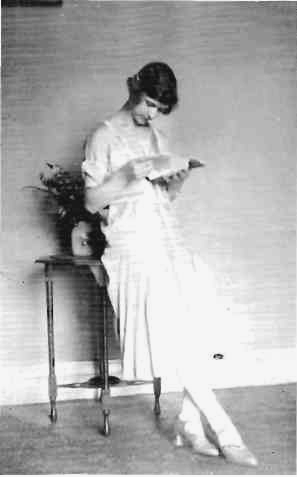| Taken from: The "Kodak"
Magazine November 1926 (p180) |
|
|
||
|
|
||
|
The dark evenings are with
us again and the ardent photographer who believes in keeping
his camera in exercise is thinking of flashlight work. Correct exposure is all-important and the in-structions issued with the flashlight outfit are a reliable guide. As in daylight photographs, underexposure is the worst error. The common cause of under-exposure in flashlight photography is to use the right amount of powder, but to have more than the correct distance between flash and subject. Suppose that, with a given amount of powder, the distance should be 8 feet, if you have the subject 16 feet from the flash the value of the light is diminished four times. Therefore, be careful when arranging your flash that it is not too far from the subject to be photographed. Another cause of disappointment, even after a correct exposure has been given, is over-development. When a Developing Tank is used this cannot occur, but it is highly important for those who use dish development to use a diluted solution and to stop development before it has gone too far. Thin negatives, full of detail, should be aimed at. Even when a negative has been slightly over-developed and is a trifle contrasty in consequence, you can obtain pleasing results by using Soft "Velox" for making the print. Be sure to use a white cloth or sheet of paper to act as a reflector. Fix it by the side of the subject which is farthest from the light ; not near enough, of course, to be included in the picture. If you can arrange an entirely plain background all the better. A neutral tone is best as either a pure white, or dead black background will tend to make a harsh picture. Work in light surroundings in preference to dark ones, if possible. Before opening the shutter and igniting the flash, see that the sitter - if you are making a portrait - is posed in a restful and an attractive manner, and do not overlook small points, such as seeing that the sitter has not her mouth open! Another small point of considerable importance is to move all unwanted furniture, pictures, etc., out of the field of view. If left in they will only distract attention from the real subject - your sitter. After your first effort you can experiment by altering the position of the camera or flash, but at first do not make too drastic changes. Examine your flashlight prints and if they are not as you desired, find out why and determine not to make the same mistake again. The Editor will be pleased to help any readers who find it difficult to make good flashlight pictures, but prints must be sent if criticism is required. |
||
| To download the original article as a pdf file, click here. | ||
 |
You May Win A Flashlight Outfit The senders of the three most helpful and constructive criticisms of the photograph reproduced on the opposite page (see left) will each be awarded a "Kodak" Electric Flashlight Outfit. In particular say if this picture well illustrates its title. The conditions are few and
simple. Criticisms must not exceed 150 words and should be written
on one side of the paper only. They should be addressed to: (Picture entitled: "A FLASHLIGHT STUDY"; taken by MISS E. MITCHELMORE, PAIGNTON) |
|
|
|
||
|
|
||